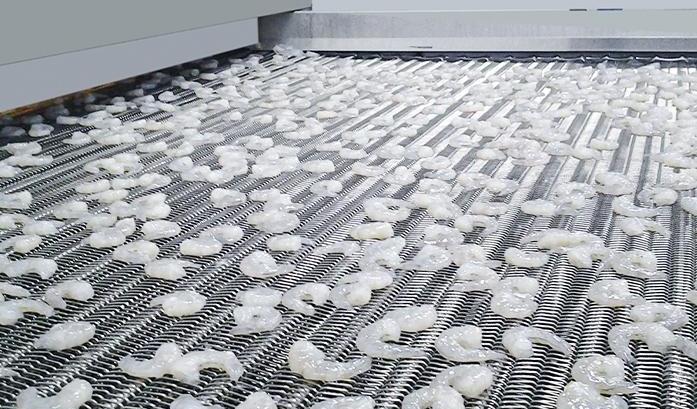Requirements for Seafood Blast Freezing Storage and How to Preserve Seafood in a Blast Freezer
Requirements for Seafood Blast Freezing Storage and How to Preserve Seafood in a Blast Freezer
Seafood blast freezing storage is a crucial facility for seafood processing and storage, ensuring the freshness and quality of seafood while extending its shelf life. CBFI, as a professional supplier of refrigeration equipment, produces blast freezers widely used in seafood storage, with a great reputation in the industry.

This article will provide a detailed overview of the requirements for seafood blast freezers, preservation methods, and practical advice and precautions based on the characteristics of CBFI's products.
Requirements for Seafood Blast Freezing Storage
The design and construction of a seafood blast freezer must meet a series of stringent standards and requirements. The following are key requirements:
-
Temperature Control: The blast freezer must be able to rapidly reduce the temperature of seafood below its freezing point, typically between -25°C and -35°C, to ensure quick freezing, prevent microbial growth, and halt enzyme activity.
-
Humidity Control: Humidity should be maintained at over 90% to prevent dehydration and deterioration of seafood.
-
Insulation: The freezer's insulation must be excellent to reduce energy consumption and maintain a stable low-temperature environment.
-
Efficient Refrigeration System: The system should be efficient and stable to ensure seafood quality during storage.
Methods for Preserving Seafood in Blast Freezers
To store seafood in a blast freezer, certain methods and steps must be . Here’s how:
-
Preprocessing: Before placing seafood in the blast freezer, it should undergo appropriate preprocessing such as cleaning and gutting to reduce bacterial contamination.
-
Separation by Type: Seafood should be stored separately by type to avoid cross-contamination.
-
Arrangement: The seafood should be arranged flat to ensure even freezing, and should not be stacked.
-
Temperature and Humidity Checks: Regular checks on the freezer's temperature and humidity are necessary to ensure they meet the storage requirements.
-
Door Management: The freezer door should be kept closed as much as possible to reduce the loss of cold air and temperature fluctuations.
-
Cleaning and Maintenance: Regular cleaning and maintenance of the blast freezer are essential for optimal operation.

Personal Reflection
After learning about CBFI's blast freezer products, I deeply understand the importance of professional equipment in seafood storage. A blast freezer not only guarantees the freshness and quality of seafood but also effectively extends its shelf life. This is crucial for the seafood processing and sales industry. Using CBFI's blast freezers not only improves work efficiency but also reduces operational costs, enhancing the company's market competitiveness.
Expert Opinions and Suggestions
Experts suggest that when choosing a blast freezer, factors such as refrigeration efficiency, temperature control accuracy, energy-saving performance, and after-sales service should be prioritized. CBFI stands out in these areas, with high performance in all aspects. Moreover, experts recommend that the usage and maintenance of seafood blast freezers follow scientific methods, with regular inspections and maintenance to ensure stable equipment performance and preserve seafood quality.

Precautions
When using a blast freezer to store seafood, several important precautions need to be observed:
-
Temperature and Humidity Control: The temperature and humidity of the blast freezer must be strictly controlled to prevent seafood quality deterioration.
-
Preprocessing: The preprocessing of seafood before freezing should not be overlooked, as it directly impacts freezing effectiveness and food safety.
-
Regular Cleaning and Maintenance: Cleaning and maintenance are crucial to extend the equipment’s service life and ensure seafood storage quality.
-
Compliance with Regulations: Ensure that the use and management of the blast freezer comply with relevant regulations and standards for food safety and environmental sustainability.
Friendly Tips
To ensure the effective preservation of seafood in the blast freezer, the following tips are recommended:
-
Regular Maintenance: Regularly check and maintain the freezer, especially the refrigeration system, to ensure efficient and stable operation.
-
Monitor Temperature and Humidity: Monitor the freezer’s temperature and humidity in real time, and make timely adjustments based on storage needs.
-
Staff Training: Ensure personnel operating the blast freezer undergo professional training to understand the correct operation methods and precautions.
-
Communication with the Supplier: Maintain good communication with CBFI for professional technical support and after-sales service.


